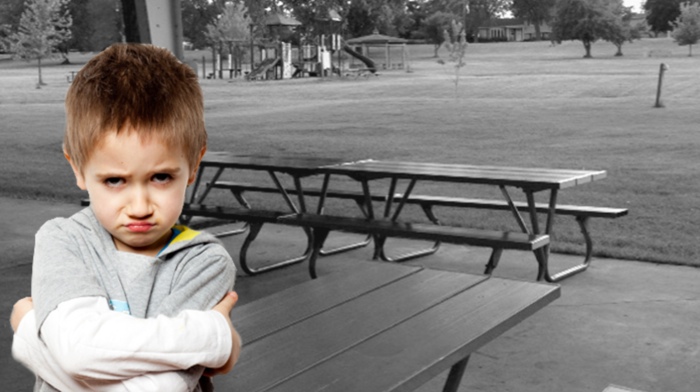Intro
Reporting Requirements
Types
Talking to
a Child
Making the
Report
Conclusion
Listen to audio
Talking to a Child
Remember Alex? You met him at the beginning of the training. Let’s look at the situation again.

So, now what is the next thing that you do?
You do not know enough right now to form a judgment as to whether the bruising has an accidental or non-accidental cause. You just know that Alex has bruising and that he seems to want to hide it, and that could be due to any number of reasons.
Is it reasonable to ask him what happened? Yes. It is perfectly natural to ask. Just remember that you are not interviewing Alex. That is done by the CPS or law enforcement system. You are just asking a few questions to help you either:
1) identify possible abuse and report it, or
2) rule out possible abuse and determine if other actions might be appropriate
So what do you say to Alex? That depends in part on what your normal communication style is with a child Alex’s age and your relationship with Alex.
Here are some things to keep in mind:
|
 Now that we’ve reviewed some important tips for talking with a child you suspect to have been maltreated, let’s see what happened when you talked with Alex.
Now that we’ve reviewed some important tips for talking with a child you suspect to have been maltreated, let’s see what happened when you talked with Alex.
You tell Alex you noticed the bruises and ask him how it happened, and he ducks his head, pulls his sleeves down again and then says that he fell down. “You fell down? How did that happen?” you ask. “I don’t know; I just fell down.” He doesn’t want to talk about it, and he is clearly uncomfortable with the attention. The other thing you notice is that bruises across the tops of both forearms do not fit with the explanation of falling down.
You are ready to report.
In the next section, we’ll look at making the report, and what happens when you do.
![]() TIP: Watch this video for advice from a child on how to respond when a child discloses maltreatment.
TIP: Watch this video for advice from a child on how to respond when a child discloses maltreatment.
Included with permission from:
Center for the Application of Information Technologies | Western Illinois University | http://www.cait.org
